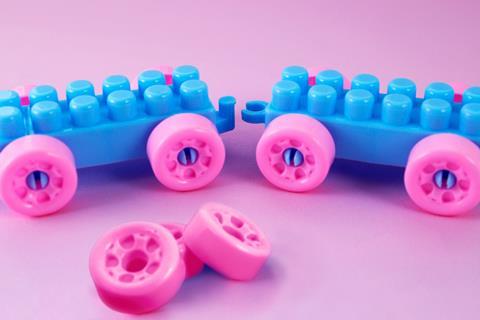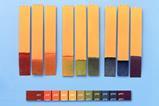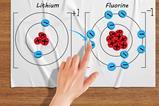Five ways to support and challenge 14–16 year-old learners to improve their confidence in quantitative chemistry
If there is one part of quantitative chemistry that teachers of 14–16 sometimes wish they could avoid, it is excess and limiting reagents. Even the most mathematically-minded students can get themselves in a tizz checking and rechecking molar quantities while adjusting for the ratios of reactants and products.
This troublesome topic wasn’t even on 14–16 qualifications for the first 10 years of my career and it has taken many iterations for me to find a sequence of learning that works for me and my students. Here are five ways to make excess and limiting reagents more accessible for your learners.
1. Secure foundation concepts
To be successful at this topic students need to be absolutely secure in calculating moles for solids and/or solutions depending on the specific qualification. They also need to fully understand what the coefficients (multipliers) mean in balanced chemical equations. Check for fluency in these areas before introducing this additional level of difficulty.
To be successful at this topic students need to be absolutely secure in calculating moles for solids and/or solutions depending on the specific qualification (rsc.li/3DIl6j0). They also need to fully understand what the coefficients (multipliers) mean in balanced chemical equations. Check for fluency in these areas before introducing this additional level of difficulty.
2. Borrow strategies from maths to make the concept tangible
Excess and limiting reagents is a difficult mathematical concept in chemistry. So, it makes sense to borrow strategies that maths teachers use to help learners overcome low confidence and find a way into a problem.

Manipulatives can make this concept seem tangible. I tend to use old toys or laminated shapes to illustrate the key ideas. My favourite way of introducing limiting reagents is to tell students they need one body and four wheels to make a car, then provide them with four body shapes (rectangles) and 18 wheels (circles) and ask them how many cars they can make. To bring in more ratios they can then make a bendy bus, two bodies and eight wheels per vehicle. This helps students to physically see that there are parts left over; it doesn’t matter how many wheels you have in excess, you can’t make any more vehicles. I can then relate this to chemistry and remind students about reactions they have done with excess solid that they have filtered off, e.g. making copper sulfate from copper oxide and sulfuric acid.
2. Borrow strategies from maths
Excess and limiting reagents is a difficult mathematical concept in chemistry. So, it makes sense to borrow strategies that maths teachers use to help learners overcome low confidence and find a way into a problem.
Partial credit is always better than no credit
Manipulatives can make this concept seem tangible: I tend to use old toys or laminated shapes to illustrate the key ideas. My favourite way of introducing limiting reagents is to tell students they need one body and four wheels to make a car and then provide them with four body shapes (rectangles) and 18 wheels (circles) and ask them how many cars they can make. To bring in more ratios they can then make a bendy bus, two bodies and eight wheels per vehicle. This helps students to physically see that there are parts left over: it doesn’t matter how many wheels you have in excess, you can’t make any more vehicles. I can then relate this to chemistry and remind students about reactions they have done with excess solid that they have filtered off, e.g. making copper sulfate from copper oxide and sulfuric acid (rsc.li/4fPmUnM).
3. Help students decode the question
There are only two types of calculation question where the data needed to calculate the amount of substance is given for both reactants. The first one is titration – which students find easy to spot – and the other is limiting and excess reagents. Getting students to look through a past paper and identify the types of calculations can be a valuable exercise, and gets some extra value out of papers beyond just doing the questions.
4. Encourage attempts and praise partial credit
Sometimes students see a limiting reagent question and choose to leave it blank. They might find it overwhelming or feel like they can’t do it. However, all students who can calculate moles can get some marks on these questions just by doing an initial calculation. My mantra in the classroom is ‘empty space is wasted potential’. Encourage all students to complete these first two steps and praise the partial credit they receive. If students find it difficult to know where to start, you can model colour coding the two reactants and the numbers (masses or concentrations and volumes) associated with them. Partial credit is always better than no credit.
5. Vary the format of the practice
Past paper questions are great but those questions will never appear again. For the very top achievers, we are aiming for true fluency with this concept. When designing our own practice sheets it is tempting to take an exam paper’s wording and just vary the numbers or reactants, but it is important to change the wording too so students are not using a formulaic approach. Look for old exam papers for qualifications at post-16 to find interesting contexts and varied wording of questions to challenge students who are more confident with this topic.
These tips will help less confident learners and stretch, and hopefully inspire, the highest achievers. With the right support and challenge this can become an immensely satisfying concept for all learners to get to grips with.
Kristy Turner














4 readers' comments